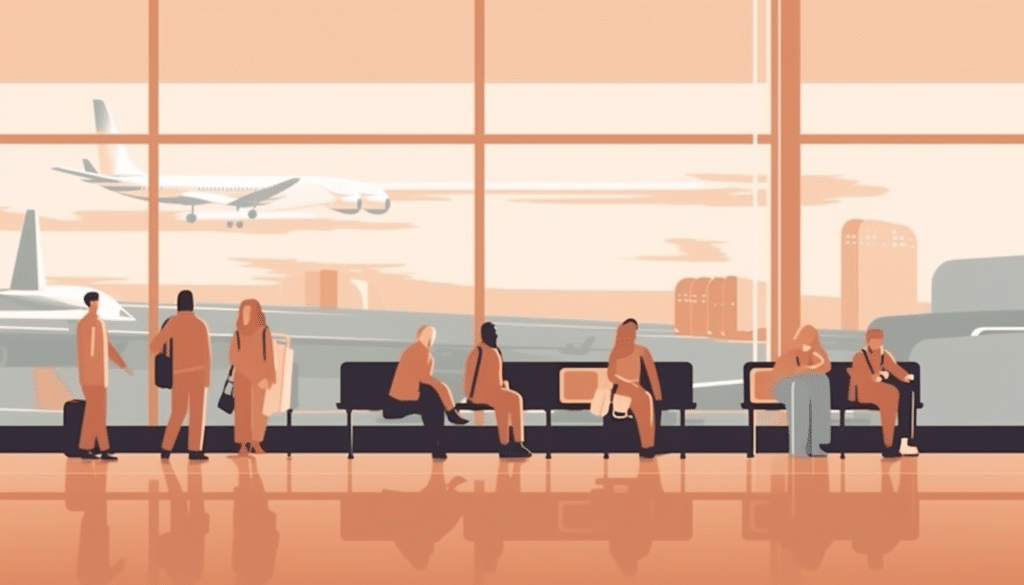The cheapies save money in a number of ways. They eliminate free onboard meals, charging for them instead. They fly to cheaper, less-congested secondary airports. They emphasize short flights, fast turnaround and maximum utilization of aircraft. They’re tough on excess baggage. A few extra kilograms can double the cost of your flight.
They emphasize direct sale of tickets, especially over the internet, avoiding travel agent fees. They have only one passenger class, and don’t bother with First or Business class. Nor do they bother with Frequent Flier miles. They even give employees multiple tasks. Flight attendants may also clean the cabin or act as gate agents.
In order to compete with these cheapies, main carriers have cut their fares on competing routes. Sometimes they are only 20 percent more expensive than discount airlines, and that could mean that the total trip cost may be the same, or even cheaper, with the main carriers. Don’t forget the cost, and inconvenience, of getting to those out-of-the-way airports.
Here are some of the main low cost carriers:
Ryanair
Ryanair was the first European low fare airline, and it is still the largest. It has a hub at the former US air base at Hahn, Germany, and its largest operational bases are at Dublin International and London Stansted Airports. Each year it carries some 60 million passengers in 195 aircraft on more than 800 routes across 26 European countries. (www.ryanair.com)
EasyJet
EasyJet, based at London’s Luton Airport, is Europe’s second biggest low cost carrier, after Ryanair. In contrast to Ryanair it flies mainly to the leading airports, a strategy that attracts business travelers. It has hubs in three London airports (Gatwick, Stansted and Luton) and two in Paris (Charles de Gaulle and Orly). Other hubs are Berlin, Liverpool and Bristol, and it flies from these to 103 airports, mainly in Europe. (www.easyJet.com)
Germanwings
Germanwings, now fully owned by Lufthansa, has its main base at the Cologne-Bonn Airport, with secondary bases at the Stuttgart, Berlin-Schönefeld, Hamburg and Dortmund Airports. It has 26 Aibuses and flies to some 70 airports in Eastern and Western Europe. (www.germanwings.com)
Air Berlin
Air Berlin started as an American-operated charter airline back in the days when only the World War II victors could serve Berlin. Now it has grown to be Germany’s second biggest airline, after Lufthansa. Today its fleet extends to 136 aircraft flying to more than 130 destinations within Germany, Europe and throughout the world. Its main base is at Berlin-Tegel Airport, with hubs at Nürnberg, Düsseldorf and Palma de Mallorca, (www.airberlin.com)
TUIfly
TUIfly, with 45 aircraft, is the third largest German airline, after Lufthansa and Air Berlin. Headquartered at the Hannover Airport, it operates services mainly to European holiday resorts and carries more than 12.5 million passengers a year to 80 destinatins in 17 countries. It serves many German airports, even smaller ones. (www.tuifly.com/en)
Condor
Condor, owned by one of the world’s leading travel agencies, Thomas Cook, is unique in that it also offers long stretch flights at low prices. You can fly to America, the Caribbean, Africa and Asia for as little as €279. It connects 25 airports inside of Germany. (www.condor.de)
There are very many other low cost airlines and more are being established with regularity. Here are some others: AirBaltic, Austrian-Airlines, Blue1, BMI Baby, Lot, Dauair, Helvetic, Intersky, SkyEurope, SmartWings, Transavia, VLM, Brussels Airlines and Wizz Air.
Booking Air Travel Online
Buying an airline ticket online is the way to go these days. You can compare prices, pick your seat and print your boarding pass without leaving home. And the service is available 24/7. It’s also a benefit for the airlines, cutting costs in these days of intense competition.
According to an Internet research firm, online travel sales will account for some 25 percent of all bookings in 2006, up from less than 15 percent in 2003. By 2009, it is predicted roughly one-third of all travel revenues will be handled via the Internet.
There are many different websites that you can go to to book flights. What is important is the ease of navigation, the number of airlines that are searched, whether or not the whole process is uncomplicated and how quickly the booking engines can process your requests. Another consideration is how the flights can be listed. If you are looking for the best fare, then an engine that lists by price first is probably a good idea. Some booking engines are better than others.
Though the websites guide you step-by-step as you make a transaction, there are some things you ought to know. You have to choose at the outset between the website of one of the online travel agencies and the website of the airline with which you are thinking of traveling.
A factor to take into consideration for those looking for transatlantic flights is whether or not you can book tickets from Europe for travel from the States to Europe. Also, for travel within Europe you may want to see flights offered by different low cost airlines as well as charter flights. SatoTravel has a very efficient booking engine at www.europe.satovacations.com that offers all of these features.
There is no charge for use of an airline’s website, but you are limited to that airline’s flights. There may be a cheaper one out there with another airline. The online agencies cut through this by giving you a variety of flights to your destination.


























